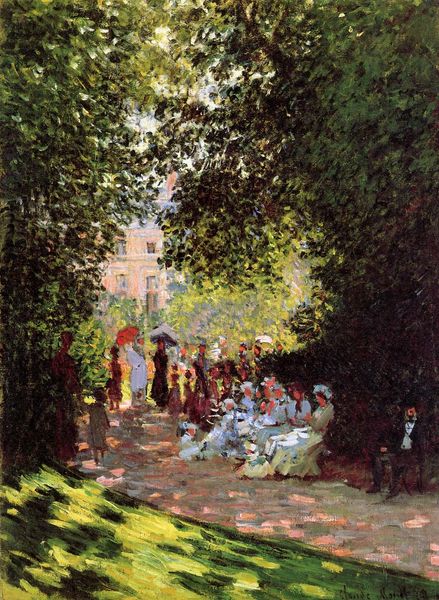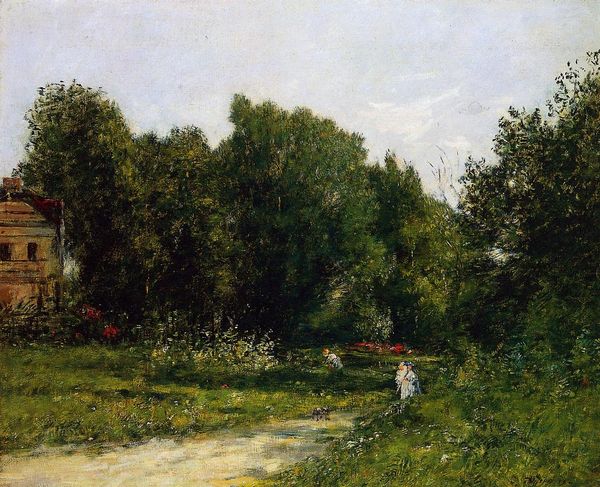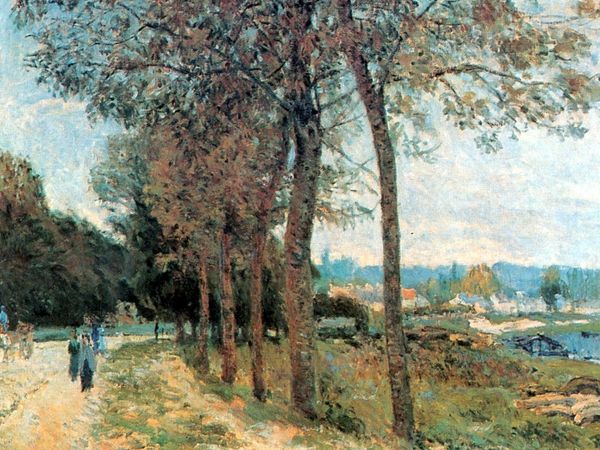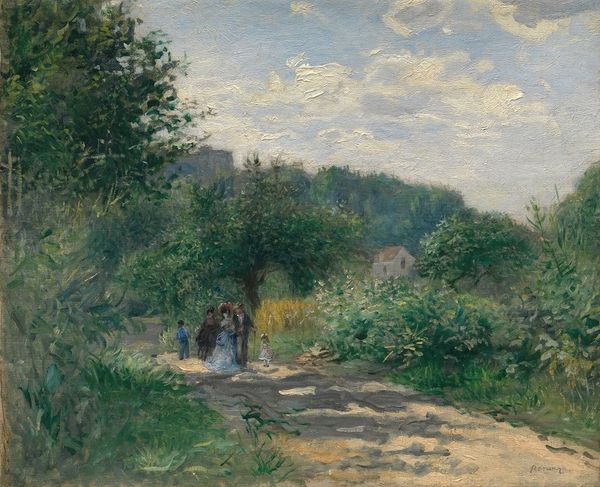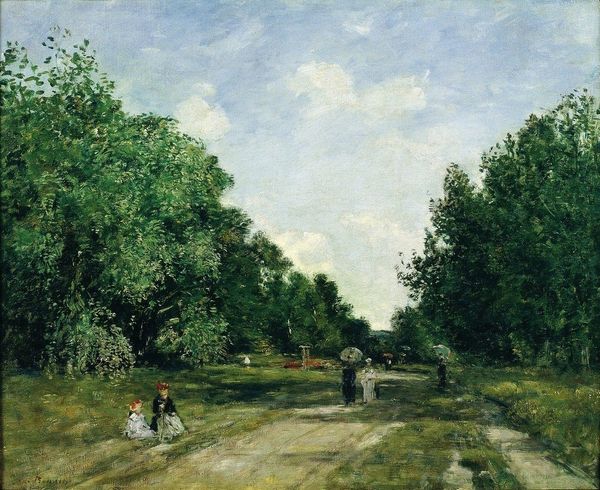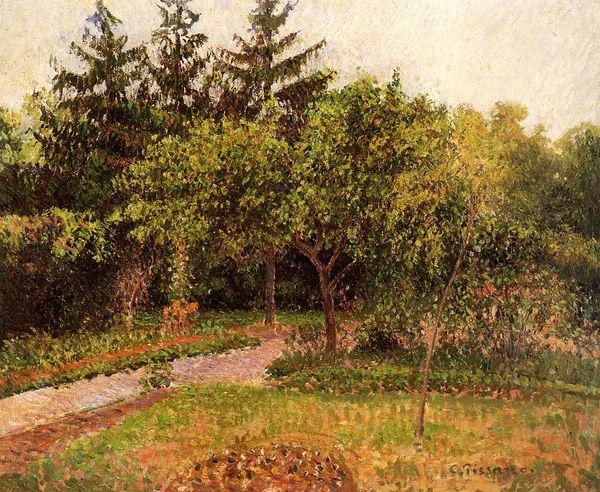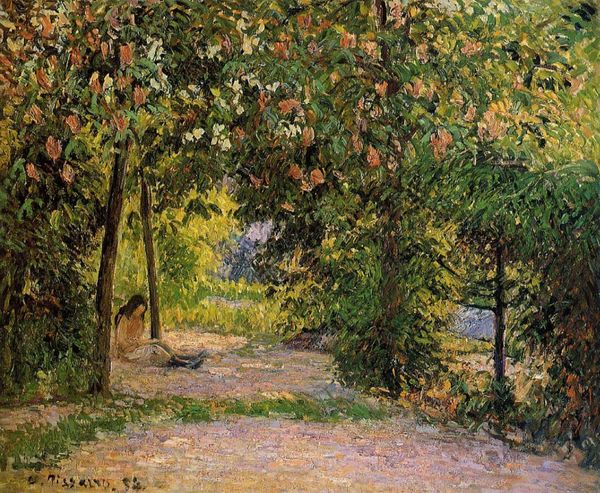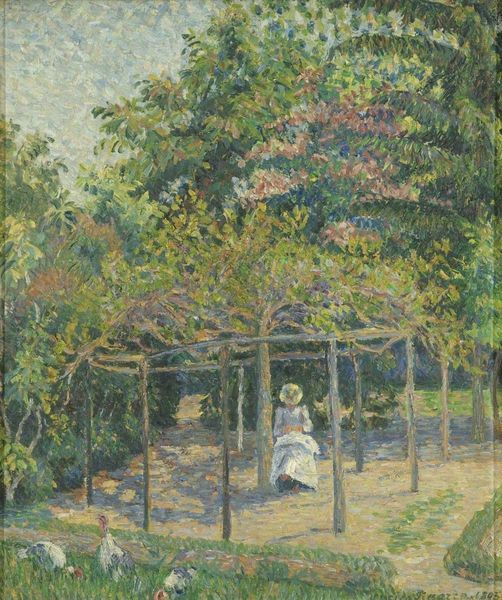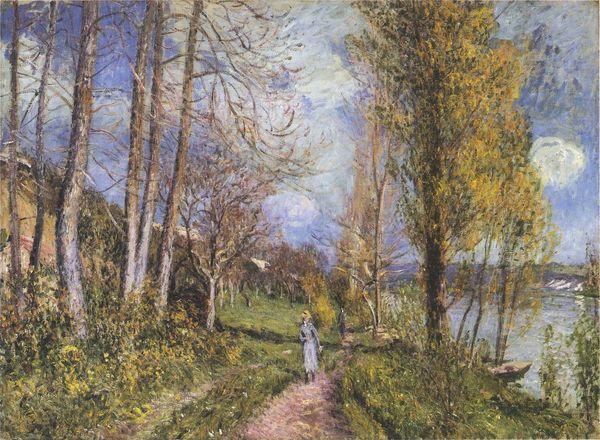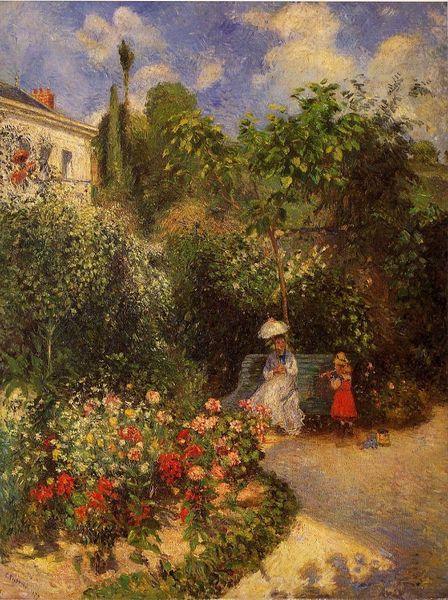
painting, plein-air, oil-paint
#
portrait
#
painting
#
impressionism
#
plein-air
#
oil-paint
#
landscape
#
impressionist landscape
#
figuration
#
cityscape
#
genre-painting
Copyright: Public domain
Editor: So, here we have Claude Monet's "At The Parc Monceau," painted in 1878 using oil on canvas. The dappled sunlight and loose brushstrokes create such a serene atmosphere, almost dreamlike. What are your thoughts when you look at it? Curator: For me, it’s like stumbling upon a secret gathering. Can’t you almost hear the hushed tones of conversation? Monet isn’t just showing us a park; he's letting us eavesdrop on a moment, a fragment of Parisian life. I'm curious, what does that canopy of trees feel like to you? Editor: Hmm, the trees almost feel like a protective embrace, shielding the figures from the bustling city just beyond. Like a secluded haven. I think what also catches my eye is how he renders the figures-- almost swallowed by their vibrant dresses. Curator: Yes! They're both present and dissolving, aren’t they? Like ghosts in a glade. And that, I believe, is where Monet’s genius lies: capturing not just what's seen, but also the fleeting feelings a scene evokes. What do you make of the fact it's painted "en plein air"? Editor: Knowing it's painted "en plein air", it helps me understand the quick, almost ephemeral quality. Like he had to capture the light before it changed. Curator: Precisely! Each brushstroke is a response to the immediate sensory experience. It is more than just observation: it’s a collaboration with the atmosphere, the light, the very pulse of the park. Monet turns nature into feeling; light and atmosphere, almost into main subjects! Editor: Wow, that really changes how I see the painting. I'm leaving with a much richer understanding. Curator: That makes two of us, then. Every conversation opens up fresh perspectives. It’s like finding another hidden path in the Parc Monceau itself!
Comments
No comments
Be the first to comment and join the conversation on the ultimate creative platform.
